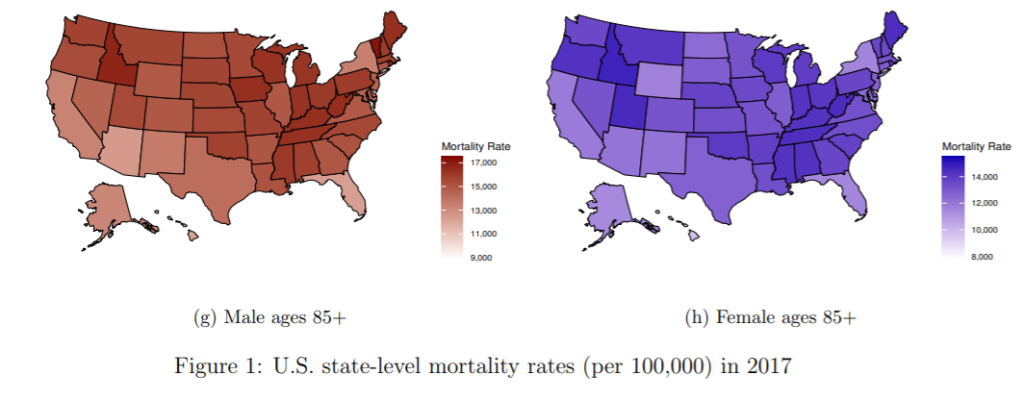Link: https://robjhyndman.com/publications/us-longevity/
Graphic:

Abstract:
This paper investigates mortality inequality across U.S. states by modelling and forecasting mortality rates via a forecast reconciliation approach. Understanding the heterogeneity in state-level mortality experience is of fundamental importance, as it can assist decision-making for policy makers, health authorities, as well as local communities who are seeking to reduce inequalities and disparities in life expectancy. A key challenge of multi-population mortality modeling is high dimensionality, and the resulting complex dependence structures across sub-populations. Moreover, when projecting future mortality rates, it is important to ensure that the state-level forecasts are coherent with the national-level forecasts. We address these issues by first obtaining independent state-level forecasts based on classical stochastic mortality models, and then incorporating the dependence structure in the forecast reconciliation process. Both traditional bottom-up reconciliation and the cutting-edge trace minimization reconciliation methods are considered. Based on the U.S. total mortality data for the period 1969–2017, we project the 10-year-ahead mortality rates at both national-level and state-level up to 2027. We find that the geographical inequality in the longevity levels is likely to continue in the future, and the mortality improvement rates will tend to slow down in the coming decades.
Additional link: https://robjhyndman.com/papers/uslongevity.pdf
Author(s): Han Li, Rob J Hyndman
Publication Date: 14 February 2021
Publication Site: Rob J Hyndman’s personal site